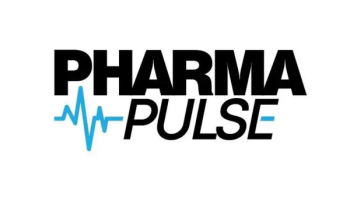340B: Recent Timeline
- July 31, 2025: HRSA launches 340B Rebate Model Pilot. The US Health Resources & Services Administration (HRSA) formally opened a voluntary Rebate Model Pilot Program, inviting select drugmakers to apply to implement retrospective rebates—instead of upfront discounts—for 340B drugs included in the Medicare negotiated price list. Public comments are being accepted through Sept. 8, with manufacturer submissions due by Sept. 15, and HRSA expected to approve plans by Oct. 15, ahead of a projected Jan. 1, 2026, pilot launch.
- August 2024–September 2024: Manufacturers’ push for rebate model and resulting lawsuits. Last August, Johnson & Johnson signaled its intent to implement the rebate model starting in October 2024, joining other companies such as Bristol Myers Squibb, Lilly, Novartis, and Sanofi in launching legal challenges against HRSA for blocking the change. J&J eventually sued HRSA in late 2024 after retracting its plan under threat of penalties.
The cost of healthcare remains a bipartisan concern, as too many Americans cannot access the care they need, including life-saving medications. Policymakers continue to grapple with how to rein in prescription drug prices, improve affordability, and increase transparency for all stakeholders across both government and commercial markets. From proposed legislation in Congress to new pricing models, the national drug pricing debate is broad, complex, and evolving. But amid these efforts, a good starting point to evaluate need and effectiveness is taking a closer look at federal discount programs that are designed to lower costs and serve as safety nets.
In particular, the 340B Drug Pricing Program was created to support providers that serve our most vulnerable populations by creating savings that allow for better care for millions of patients in both urban and rural communities. Yet, the increasing complexity of the drug discount ecosystem, paired with a lack of transparent data and insufficient oversight of the growing 340B program itself, has led to unintended discount duplication and unsustainable program costs. When these programs don’t function as intended, patients ultimately pay the price.
Now, more than ever, we must ensure that patients remain at the center of every policy conversation and health system reform. In an industry built around improving outcomes, trust and accountability must underpin every interaction with stakeholders. A more transparent, technology-enabled approach is key to achieving this.
A critical moment for 340B
The 340B program has played a vital role in supporting safety-net hospitals and community health centers by enabling them to stretch limited resources further. However, the healthcare system has evolved dramatically since the program started more than 30 years ago, and program oversight, regulation, and legislation have not kept pace. Fragmented data sources, outdated infrastructure, and overlapping federal discount programs all contribute to an environment where compliance is difficult and inefficient.
The introduction of the Inflation Reduction Act’s max fair price (MFP), which will utilize a rebate model, adds another layer of complexity, increasing the risk of duplicate discounts and threatening the integrity of already strained programs. The promised implementation of MFP beginning in January 2026 raises the stakes for simplifying the way discounts are effectuated across drug discount programs. A coordinated drug discount ecosystem demands a 340B program that is implemented transparently and collaboratively, supported by modern tools that eliminate confusion and ensure the right discounts go to the right stakeholders, for the right patients.
Legal clarity and a path forward
In May 2021, the Health Resources and Services Administration (HRSA) abruptly announced a blanket policy that no conditions—no matter how reasonable—could be imposed on the offer of a 340B price. This was a departure from long-standing HRSA guidance, which allowed manufacturers to employ customary business practices, request standard information, and adopt appropriate contract conditions.
As a result of the 2021 policy change, industry leaders brought a challenge to the agency’s stance, arguing that standard business practices—such as requiring claims data to verify eligibility—should be allowed to support compliant and transparent participation in the program.
In the fall of 2024, a number of stakeholders converged around effectuating 340B transactions via a rebate model to dramatically increase transparency, provide simplicity for all stakeholders, and allow for seamless coordination within the program and with other drug discount programs. HRSA immediately blocked manufacturers from making this shift, and stakeholders again challenged the agency’s position in court.
A recent federal court decision affirmed that a rebate-based model is permissible under the 340B program and reinforced the legality of applying reasonable conditions, including data sharing, to ensure accountability. This ruling represents a meaningful step forward for the healthcare industry, providing much-needed clarity as stakeholders navigate a complex and evolving drug pricing landscape. It is now incumbent upon the Department of Health & Human Services to release clear and transparent guidance for rebate model review and approval without further delay.
The case for a rebate model
Delivering transparency in federal drug discount programs should be the top goal for all healthcare stakeholders, and allowing a rebate model in the 340B program is the most effective and efficient route to radically increasing transparency. At its core, a rebate model enhances program integrity, transparency, and sustainability. It streamlines how providers receive discounts and delivers real-time visibility into transactions across the discount ecosystem.
For covered entities, particularly those operating on razor-thin margins such as rural hospitals, the benefits are clear:
- Greater transparency ensures that the 340B price is honored quickly and efficiently. Transparent data sharing between stakeholders allows for real-time verification of eligibility and discount application, reducing errors and delays. This visibility builds trust across the ecosystem and ensures program integrity is maintained at every step.
- Faster, direct cash payments allow covered entities to collect 100% of rebates without waiting on intermediaries. A streamlined rebate process eliminates the need for multiple handoffs and reconciliations, enabling providers to access the full value of discounts directly. This accelerates reimbursement timelines and ensures covered entities are fully compensated for eligible purchases.
- Improved cash flow means providers can receive revenue before invoices are due, strengthening financial stability. By reducing the time between a transaction and rebate payment, covered entities—especially those operating on thin margins—can better manage operating costs and allocate funds where they’re needed most, including staffing and patient services.
- Reduced administrative burden frees up resources to focus on patient care. Automating complex discount reconciliation processes decreases the need for manual data entry and compliance tracking. This allows administrative and clinical teams to shift their time and energy toward delivering high-quality care, rather than managing paperwork.
With drug discount programs becoming more complex and compliance more difficult, utilizing technology to simplify operations, stretch limited healthcare resources, and protect program integrity is critical.
A call for collaboration
Accessible and centralized drug pricing data ensures manufacturers feel confident in the application of discounts, and enables providers to track savings and pass them on to patients. This creates an opportunity for stakeholders, including healthcare providers, manufacturers, policymakers, and technology partners, to come together and build a more unified, sustainable system.
By leveraging technology to share data securely and transparently, we can modernize the drug discount landscape, reduce inefficiencies, and ultimately ensure these programs serve their original purpose: improving access to care for those who need it most.
A rebate model represents more than a technical fix—it’s a smarter, more equitable foundation for drug discount programs in the future.
About the Author
Angie Franks is the CEO of Kalderos.





